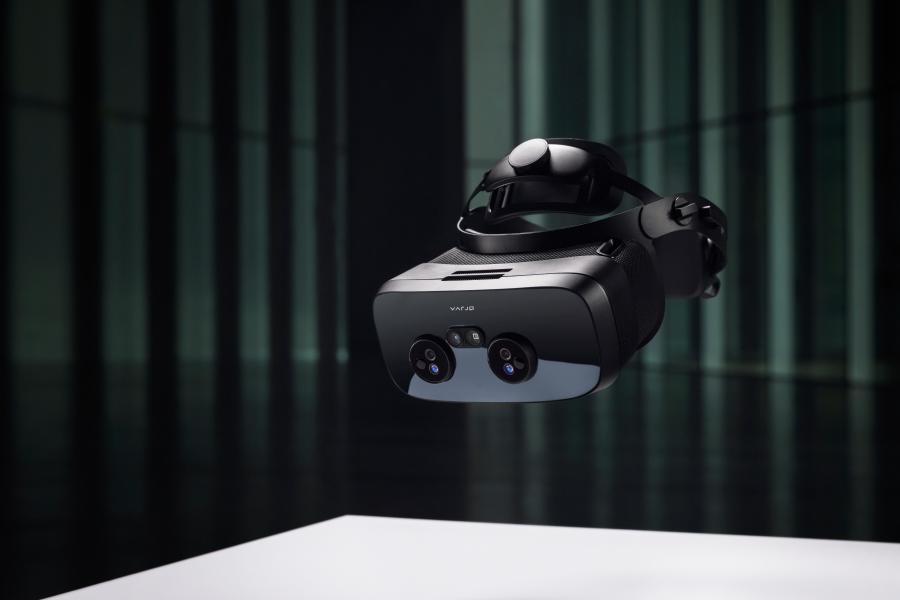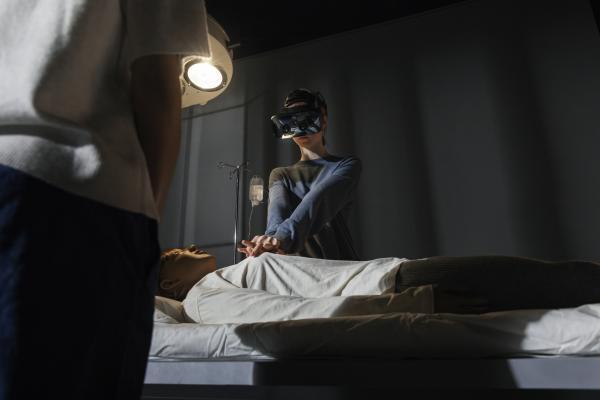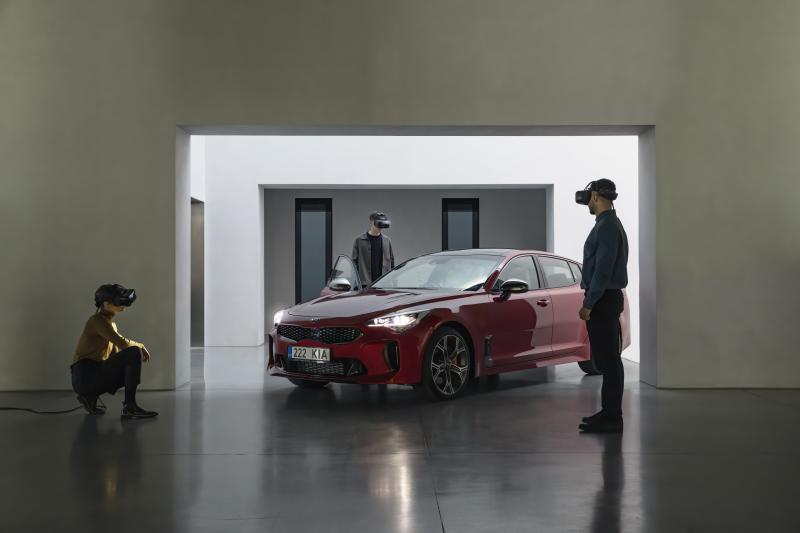Finnish metaverse company Varjo is boldly going where no one has gone before with virtual reality technology that makes virtual teleportation a reality
In 1966, the crew of the Starship Enterprise blasted off into space and onto American television screens. Star Trek went on to influence the lives of people everywhere more than almost any other television series.
The show’s science fiction sparked real-life scientific breakthroughs. The technology featured in the show inspired the creation of many modern devices, such as cell phones, tablets and Bluetooth headsets. But the most famous Star Trek device has yet to be developed.
Or has it finally become reality? Finnish company Varjo says it’s making teleportation possible.
From science fiction to science
Varjo’s technology is probably not how you imagine it would be to teleport. It doesn’t look anything like it did in Star Trek. Nobody dematerialises and subsequently rematerializes in another place. It actually doesn’t include any travel whatsoever.
So how does it work?
“With our technology, you’ll be able to capture your surroundings in 3D and then invite somebody else to join that same exact reality,” says Urho Konttori, Varjo’s co-founder and chief technology officer.
So what you need to be able to teleport is Varjo’s extended reality headset.

The headset digitises the world in real-time recreating whatever you’re looking at incredible speed. This feed is transported to the cloud and is shared with other people (also wearing the headset) who join you in a highly accurate 3D reconstruction of your surroundings—no matter where they are.
“The best part is that you are be able to edit and modify this shared 3D reality together, as you would edit a photo or a video,” Konttori says. Varjo calls it photorealistic virtual teleportation.
At the moment, teleportation is still in development and at first only available for Varjo users, but the company is planning to make it possible on any device.
European company, global leader
Konttori grew up in Helsinki, just two kilometres away from where Varjo now has its headquarters. He played role-playing games like Shadowrun and read science fiction. “The book that influenced me the most in that period was William Gibson’s Neuromancer.” The cyberpunk novel follows a hacker who uses a device mounted onto his head to enter cyberspace. Sounds familiar?
Fast-forward 30 years later and fiction has become reality. Varjo is a global leader in virtual and mixed reality hardware and software. The company’s headsets offer the highest resolution in the market.
But it’s difficult to convince companies to buy something they can’t see. Because of the pandemic, the company struggled to demonstrate its solutions to new customers as trade shows got cancelled and client offices worldwide closed. At the same time, the demand for better remote collaboration tools peaked.
That’s when the European Investment Bank stepped in.
The European Investment Bank supported the company with €20 million in venture debt financing, approved under the European Guarantee Fund, which helps European businesses get through capture the pandemic and even grow. Venture debt is a quasi- equity investment, but it does not deprive a company’s founders of ownership.
“Our venture debt programme gives the European Investment Bank the possibility of directly supporting innovative companies in sectors that are strategically important for Europe’s future,” says Francisco Alves da Silva, a loan officer at the Bank.
That’s crucial for Varjo.
“We are a small company, but we are competing with industry giants like Meta, Google and Microsoft,” Konttori says. “The European Investment Bank financing allowed us to stay ahead and keep innovating.”
Simulated (mixed) reality

Companies from different sectors have recognised the versatility of Varjo’s technology. It has been used in everything from stage design and building construction to surgical training and aviation simulators. The company is working with both Airbus and Boeing, and, in 2021, the European Union Aviation Safety Agency registered its first official virtual reality-based aviation training, which requires Varjo’s headsets.
The automotive industry, in particular, has implemented Varjo’s mixed reality hardware and software. “Almost every car company in the world is using our technology today,” Konttori says.
It’s not surprising given that Varjo’s offerings allow teams to go over designs in real time. Your factory can be on the other side of the planet, but with Varjo’s headset and cloud-based services, you can still experience it as if you’re there. Instead of a few days, design reviews take hours.
This also reduces the need for travel. And less travel means lower corporate carbon emissions. Staff can visit factories in different countries without getting on a plane. “Due to the travel restrictions, we couldn’t reach our factory for almost two years, but we were still able to do our regular check-ups. We would just put on our headsets, and within seconds, we were there,” Konttori says.

Metaverse grounded in reality
In 2021, Facebook became Meta, and the word “metaverse” grabbed headlines all over the world. The concept, which also originates from science fiction, refers to a network of virtual spaces in which you can interact with people who are not in the same space as you. It’s basically the internet, but in 3D.
The metaverse is often imagined as a fully animated virtual world. But at Varjo, they see it differently. “As counterintuitive as it might sound, this metaverse grounded in reality scales faster than a pre-rendered metaverse that you need to build from scratch,” Konttori says. With Varjo’s technology, you’ll be able to create a shared metaverse just by looking around and doing a real-time 3D scan of your surroundings. “It’s by far the fastest, easiest, and most scalable way of building a collaborative virtual space.”
“Varjo is truly blurring the line between science fiction and reality,” says Alves da Silva.
As one of the fathers of science fiction, Jules Verne, prophetically wrote: “Anything that one person can imagine others can make real.”
